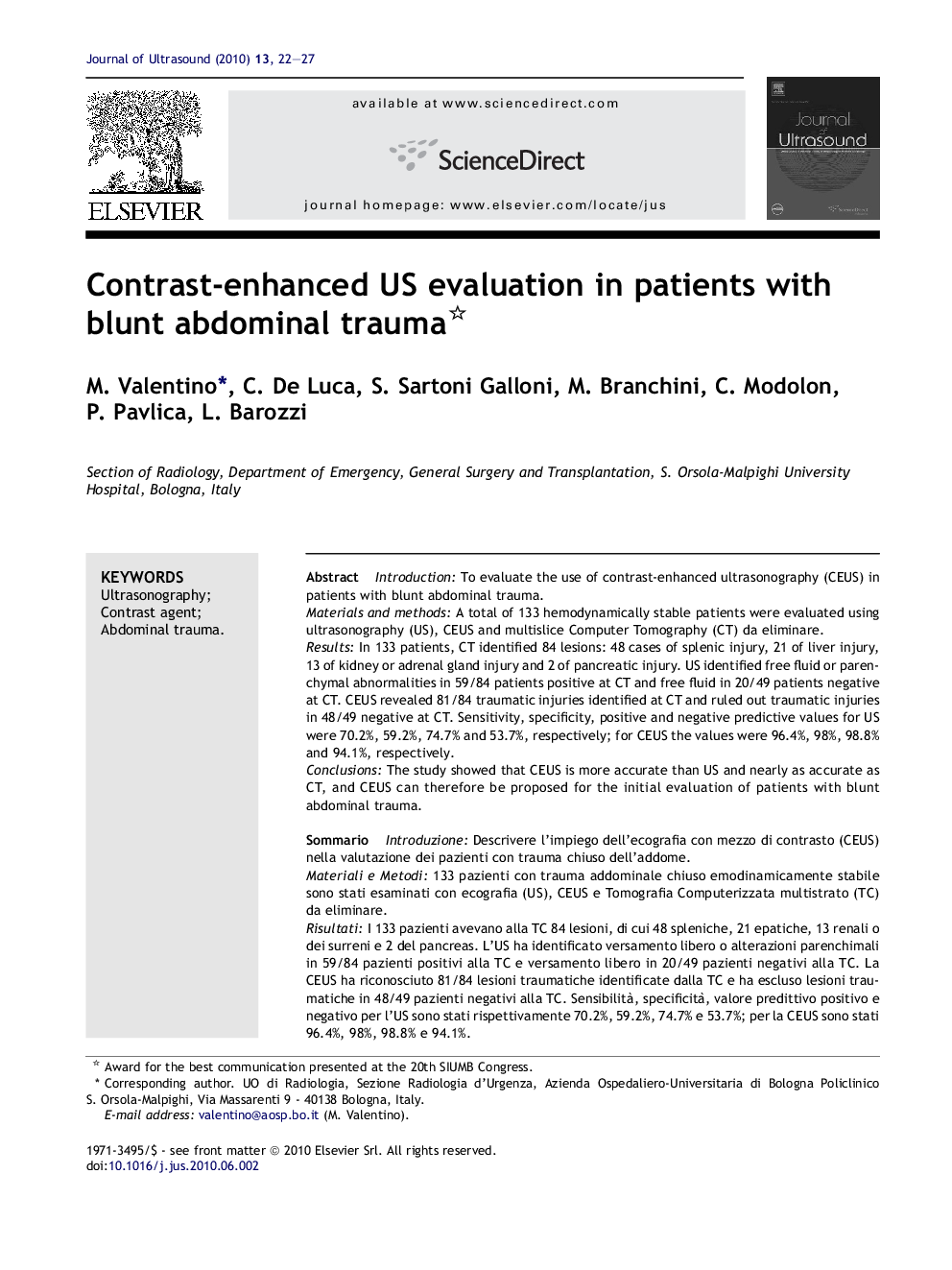| Article ID | Journal | Published Year | Pages | File Type |
|---|---|---|---|---|
| 4236872 | Journal of Ultrasound | 2010 | 6 Pages |
IntroductionTo evaluate the use of contrast-enhanced ultrasonography (CEUS) in patients with blunt abdominal trauma.Materials and methodsA total of 133 hemodynamically stable patients were evaluated using ultrasonography (US), CEUS and multislice Computer Tomography (CT) da eliminare.ResultsIn 133 patients, CT identified 84 lesions: 48 cases of splenic injury, 21 of liver injury, 13 of kidney or adrenal gland injury and 2 of pancreatic injury. US identified free fluid or parenchymal abnormalities in 59/84 patients positive at CT and free fluid in 20/49 patients negative at CT. CEUS revealed 81/84 traumatic injuries identified at CT and ruled out traumatic injuries in 48/49 negative at CT. Sensitivity, specificity, positive and negative predictive values for US were 70.2%, 59.2%, 74.7% and 53.7%, respectively; for CEUS the values were 96.4%, 98%, 98.8% and 94.1%, respectively.ConclusionsThe study showed that CEUS is more accurate than US and nearly as accurate as CT, and CEUS can therefore be proposed for the initial evaluation of patients with blunt abdominal trauma.
SommarioIntroduzioneDescrivere l’impiego dell’ecografia con mezzo di contrasto (CEUS) nella valutazione dei pazienti con trauma chiuso dell’addome.Materiali e Metodi133 pazienti con trauma addominale chiuso emodinamicamente stabile sono stati esaminati con ecografia (US), CEUS e Tomografia Computerizzata multistrato (TC) da eliminare.RisultatiI 133 pazienti avevano alla TC 84 lesioni, di cui 48 spleniche, 21 epatiche, 13 renali o dei surreni e 2 del pancreas. L’US ha identificato versamento libero o alterazioni parenchimali in 59/84 pazienti positivi alla TC e versamento libero in 20/49 pazienti negativi alla TC. La CEUS ha riconosciuto 81/84 lesioni traumatiche identificate dalla TC e ha escluso lesioni traumatiche in 48/49 pazienti negativi alla TC. Sensibilità, specificità, valore predittivo positivo e negativo per l’US sono stati rispettivamente 70.2%, 59.2%, 74.7% e 53.7%; per la CEUS sono stati 96.4%, 98%, 98.8% e 94.1%.ConclusioniLo studio ha dimostrato che la CEUS ha una accuratezza diagnostica maggiore dell’US e quasi sovrapponibile alla TC e può quindi essere proposta nella valutazione iniziale del paziente traumatizzato.
